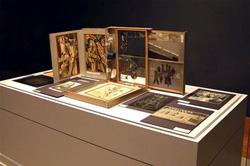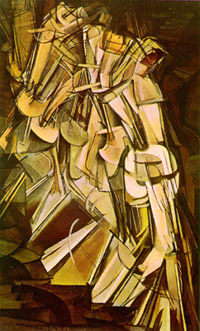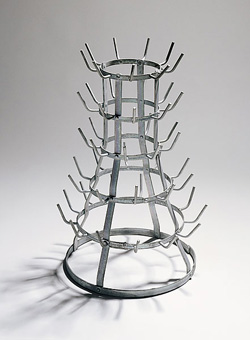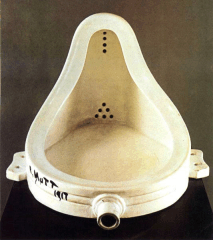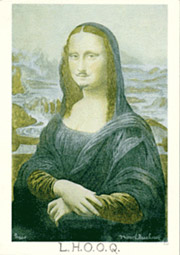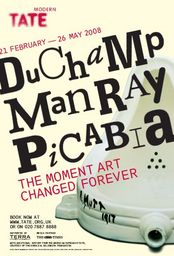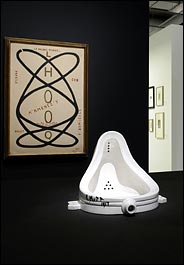Duchampian News & Views
-
Fountain Named Most Influential Modern Art Work of All Time
December 24, 2008 In 2004, Duchamp’s Fountain was named the most influential art modern art work of all time by a poll of 500 art experts. Following the announcement, an article on the BBC News website asked readers, “Do you think the Fountain is an influential work of modern art? Do you agree with the experts? Which piece would you have voted for?” The varied responses to this show that the questions Duchamp raised about the nature of art are still very much alive today. Alt.. read more... -
Speed Art Museum Presents Marcel Duchamp
December 24, 2008 "Louisville, Kentucky - The Speed Art Museum is excited to present to Louisville an exhibition of Marcel Duchamp: Marcel, Marcel. On exhibition 13 November through 17 February, 2008.Perhaps no artist of the twentieth century has aroused more passion and controversy, nor exerted a greater influence on art than Marcel Duchamp. Born 1887 in Blainville, France, Duchamp came to the public’s attention with his painting Nude Descending a Staircase No.2, which caused a fur.. read more... -
Changing Art Forever: Marcel Duchamp
December 23, 2008 "Four readers requested a post on Marcel Duchamp, one of the most controversial and most discussed artists in recent history. A Google search yields almost 1.5 million results for the French and American artist, whose 121st birthday was yesterday. Much of the controversy and discussion revolves around Duchamp’s “readymades,” particularly “Fountain” (1917), but, as evidenced by the four works of art above.. read more... -
Duchamp and his legacy
December 22, 2008"What accounts for the immense intellectual prestige which the mystique of Marcel Duchamp has enjoyed in this country – if only in certain circles, to be sure – for more decades than most of us can now remember?"
read more... -
Simplistic Art: Artcore stuff
December 20, 2008"The following excerpt from the autobiography of Lydie Fischer Sarazin-Levassor (Duchamp’s wife) is revealing, punny and insightful."
read more... -
Input/ Output: Marcel Duchamp
December 19, 2008 " What is it then that distinguishes the offer of art 'Fountain' from the functional product urinal? Visible changes that were carried out by Duchamp and appear as material language, are the signature (R. Mutt 1917), the presentation (the backside lying on a pedestal - compare with the historical photo by Stieglitz for the journal 391), the place of presentation (not a sanitation shop-window, not a washroom - but an exhibition, museum - compare to a picture of Marcel Duchamp .. read more... -
Marjorie Perloff’s Dada Without Duchamp / Duchamp Without Dada:
December 18, 2008 Dada is referred to by both art critics and it own members as a collective movement and a group provocation of both the art world and its long-held belief in individual genius.Duchamp himself, through his use of mass-produced objects, questioned the role of the individual artist.Yet at the same time, Duchamp is singled out as the movement’s leader and towers over its other members. Majorie Perloff's ariticle Dada Without Duchamp/Duchamp Without Dada: Avant-Garde T.. read more...
Avant-Garde Tradition and the Individual Talent -
Marcel Duchamp: Anything Goes
December 17, 2008 "The new exhibition at London's Tate Modern features three heavy hitters, the Frenchmen Marcel Duchamp and Francis Picabia, and the American Man Ray. They are associated with the Dada and Surrealism movements, but they were friends before these existed, and after they ended. Of the three, Duchamp is the towering genius. Out of his own interests, phobias and distractions, he created a new aesthetic that has survived to become the reigning spirit of today's art world. Its .. read more... -
Pierre Pinocelli and the Destruction of Art
December 15, 2008 In The New York Times article Conceptual Artist as Vandal: Walk Tall and Carry a Little Hammer (or Ax), Alan Riding reports on the arrest of French performance artist Pierre Pinoncelli, who attempted to break a replica of Duchamp’s Fountain that was on display at the Pompidou center. Yet, as Riding points out, “the Dada movement made its name in the early 20th century by trying to destroy the conventional notion of art.” One cannot help but think that Duchamp would ha.. read more...





